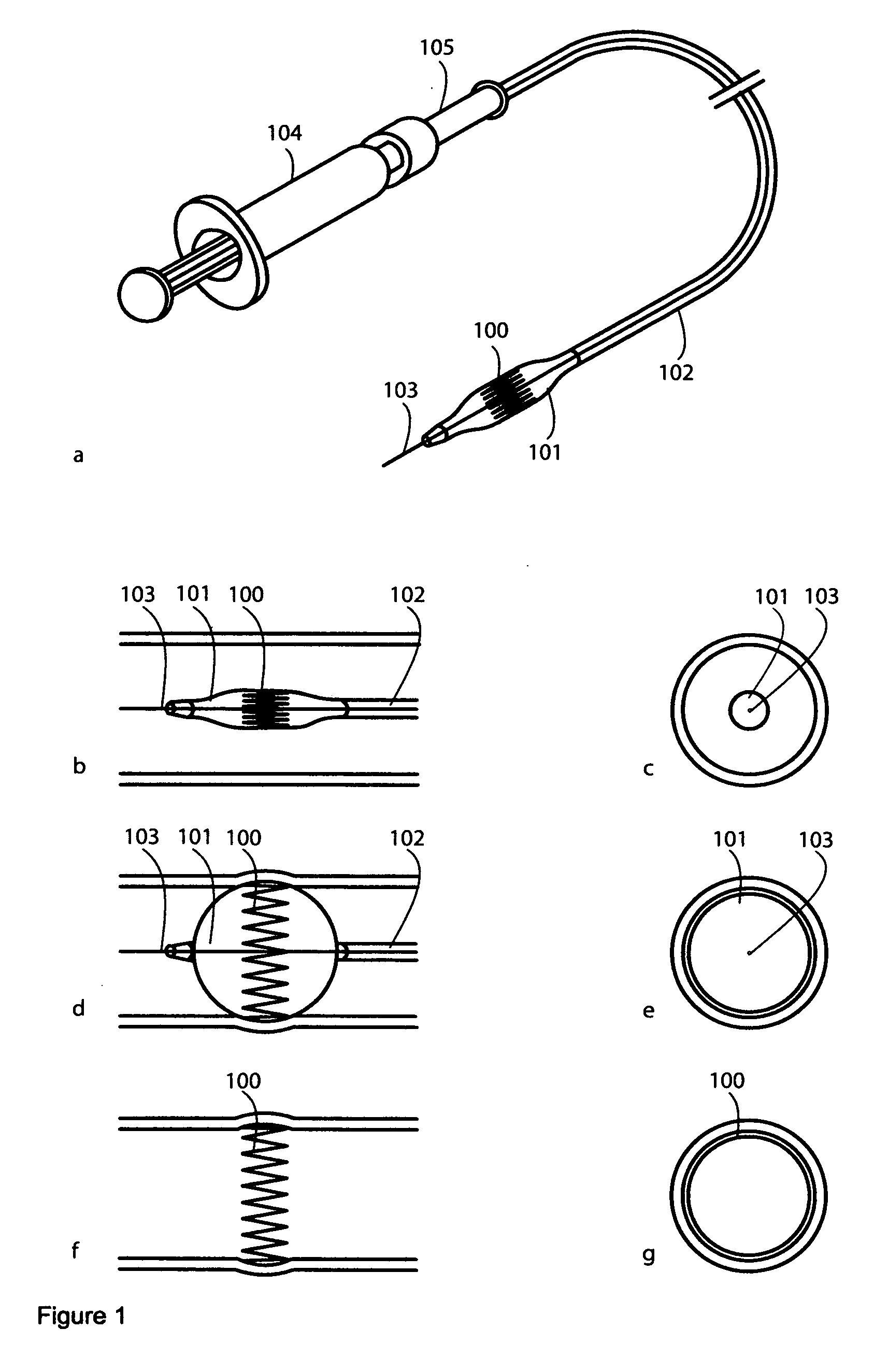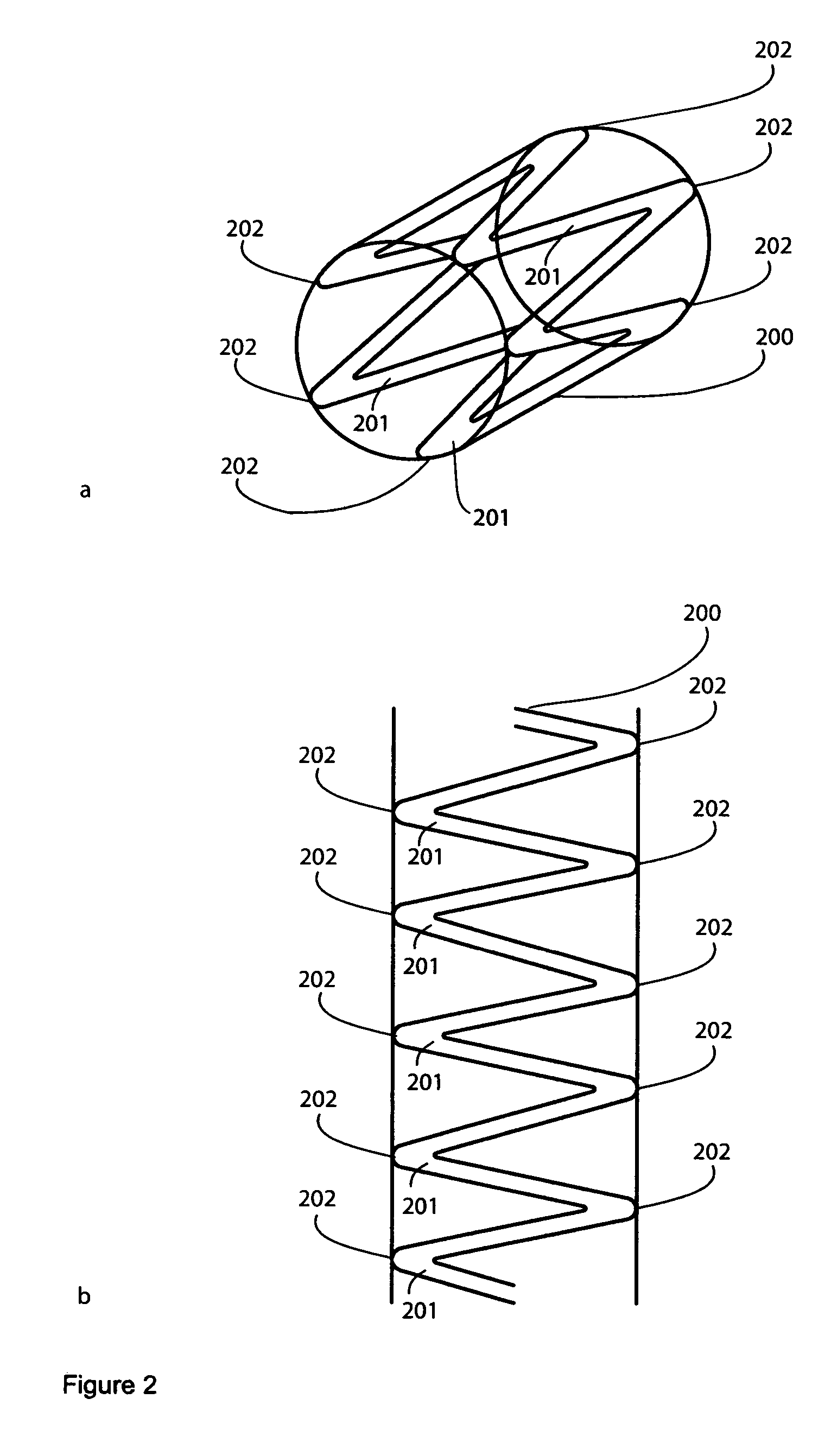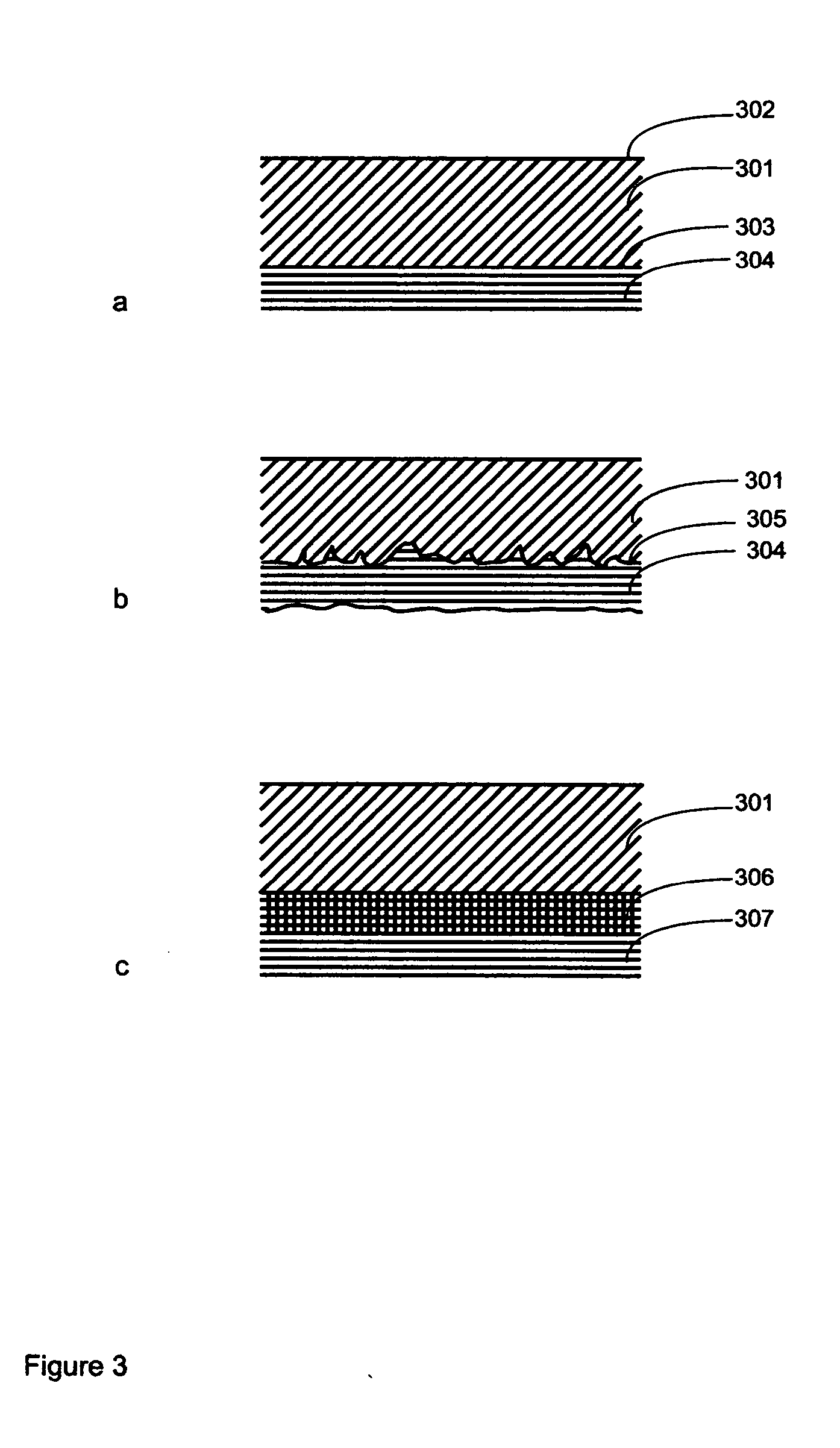Device for the treatment and prevention of disease, and methods related thereto
a technology for disease and devices, applied in the field of implantable devices, to achieve the effect of releasing drugs more quickly
- Summary
- Abstract
- Description
- Claims
- Application Information
AI Technical Summary
Benefits of technology
Problems solved by technology
Method used
Image
Examples
example 1
Device having an RLS Configuration
[0248] An RLS comprises an outer layer of polymeric matrix, which contains a drug of a high concentration that will elute very quickly, and an inner core of polymeric matrix contains a drug, that elutes slowly over a long period of time. This RLS is useful for treating a stenosis proximal downstream to the RLS and thus preventing the vessel part from restenosis.
example 2
Device having an RLS Configuration and Comprising Two Different Drugs
[0249] An RLS comprises only one material matrix, which contains two different drugs with different wash-out-characteristics. First drug elutes very quickly, while the second drug elute slowly over time. The second drug may only elute while the matrix material of the RLS slowly elutes over time, while the first drug washed out of the matrix material quickly. This RLS is also useful for treating a stenosis proximal downstream to the RLS and thus preventing the vessel part from restenosis.
[0250] In one embodiment of the invention, the RLS comprises small depots of a liquid-like or gel-type drugs that open when the matrix material vanishes by elution.
example 3
Device having an FLS Configuration
[0251] An FLS comprising a holding structure, in the shape of a ring, a metal matrix material, and fibers comprising atropine is deployed in a cardiovascular vessel. The FLS is useful for treating bradycardia and heart blocks.
PUM
| Property | Measurement | Unit |
|---|---|---|
| particle size | aaaaa | aaaaa |
| time | aaaaa | aaaaa |
| time | aaaaa | aaaaa |
Abstract
Description
Claims
Application Information
 Login to View More
Login to View More - R&D
- Intellectual Property
- Life Sciences
- Materials
- Tech Scout
- Unparalleled Data Quality
- Higher Quality Content
- 60% Fewer Hallucinations
Browse by: Latest US Patents, China's latest patents, Technical Efficacy Thesaurus, Application Domain, Technology Topic, Popular Technical Reports.
© 2025 PatSnap. All rights reserved.Legal|Privacy policy|Modern Slavery Act Transparency Statement|Sitemap|About US| Contact US: help@patsnap.com



